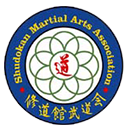The teaching and practice of paired kata is meant to communicate, among other things, how swordsmen interact in contest. Moreover, prescribed paired kata provides the context to highlight and practice some combative principles in isolation and makes them accessible to a wider audience. This complements a student’s education in solo practice, where one focuses on more intrapersonal aspects. For example, in solo practice we study body mechanics, such as methods for putting force into the sword, while in paired practice we study the dynamics of distance between swordsmen and its implication on the outcome of a contest. Aside from what is transmitted through the kata, we can gain additional insight into the aspects of swordsmanship particular to paired practice through the writings of skilled swordsmen, such as Miyamoto Musashi and Yagyu Munenori, and through first-hand experience under the appropriate restrictions to maintain safety, e.g. kendo.
Looking for an International Martial Arts Association?
SMAA offers five divisions of authentic Japanese martial arts: aikido, iaido, judo, jujutsu, and karate-do. If you want to part of a prestigious international martial arts association, give us a call at (734) 720-0330 or submit a contact form here. We look forward to helping you develop your art!












